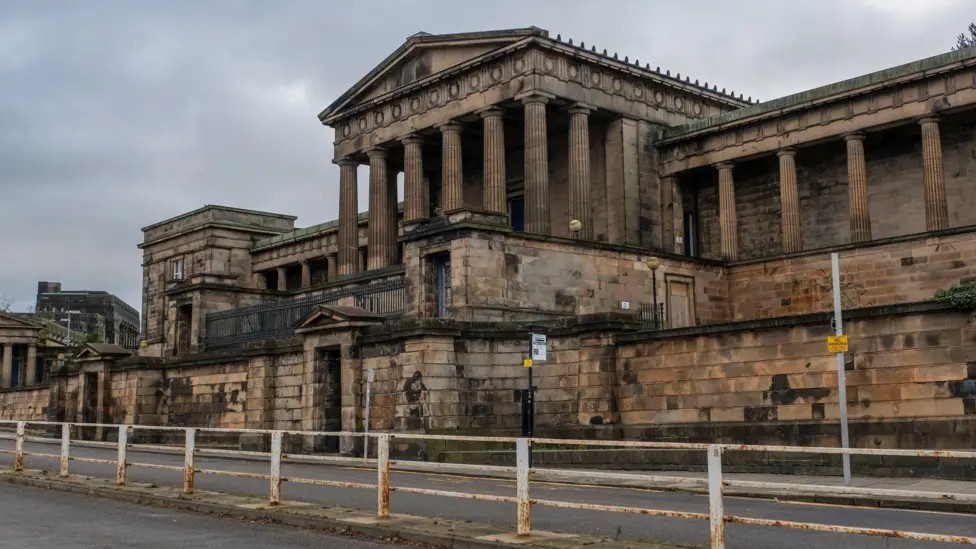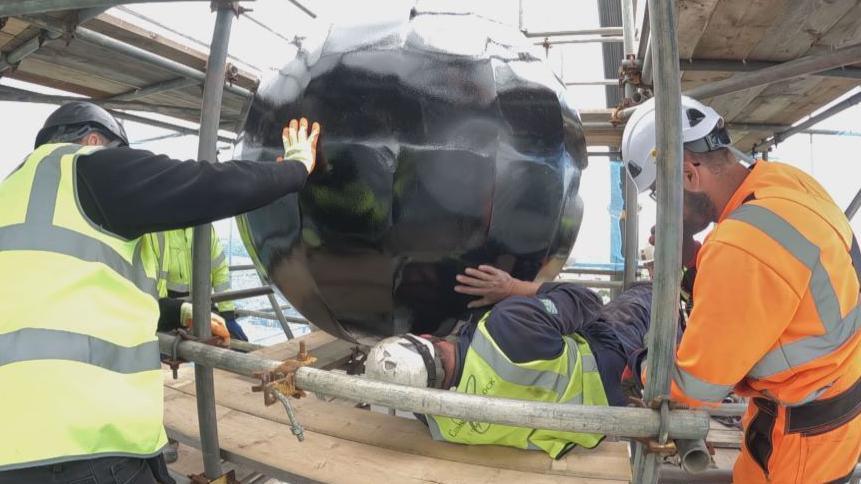'Erosion emergency' at Edinburgh landmark after grass cut too short
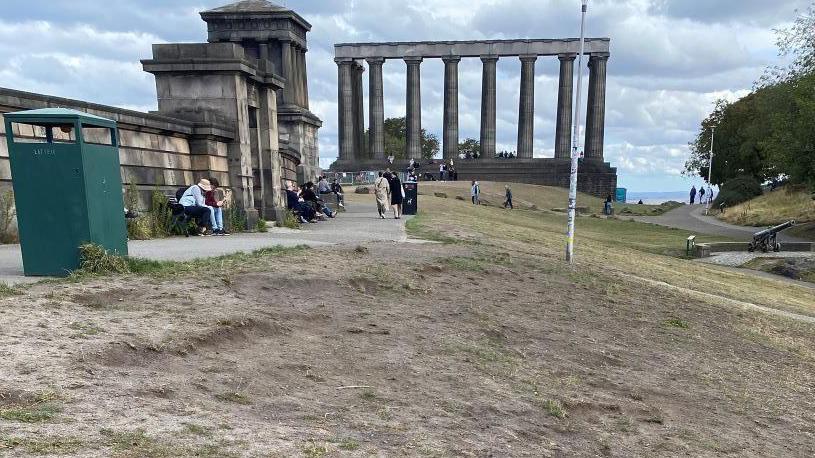
About 2,000 sq m of turf has been eroded away on Calton Hill in Edinburgh
- Published
An "erosion emergency" at Edinburgh's landmark Calton HIll has been partly blamed on council workers mowing the grass too short.
Calton Hill Conservation Trust said the erosion of the top soil on the hill - which has left large patches of bare, exposed earth - was "the worst for many years".
Chairman Simon Holledge told BBC Scotland News that the problem had been caused by a combination of the dry summer, high footfall and over-mowing.
City of Edinburgh Council confirmed it had now adjusted its grass-cutting schedules at the UNESCO World Heritage Site and it would re-plant the grass.
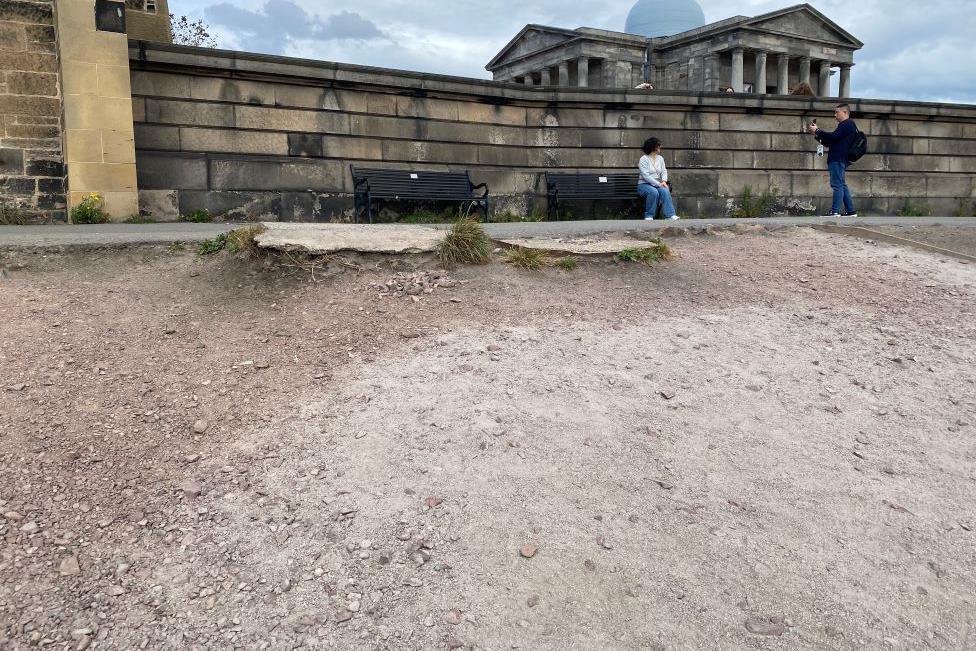
In large sections the dry, exposed earth has then blown away in the wind
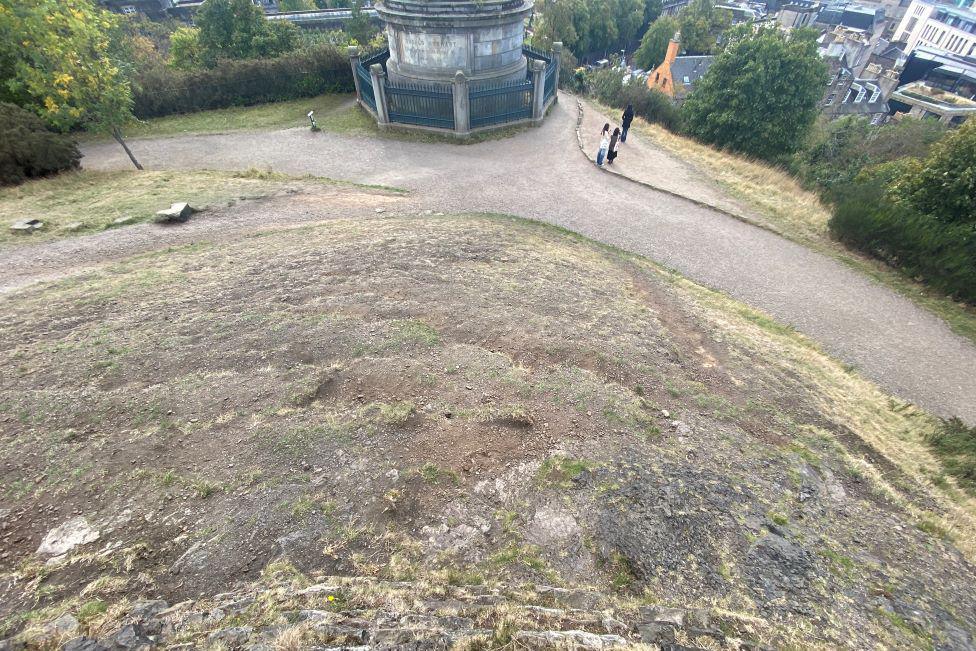
The top of the hill where the grass has been cut too frequently has been destroyed
Mr Holledge said he was "unhappy" the council had continued to cut the grass as frequently as they would during wet weather.
"The grass in our opinion was over-cut by the council," he said.
"The normal rule is you should never cut more than one third of the blade of grass because if you cut more than that it doesn't photosynthesise properly.
"They have cut 90% of the grass blades.
"They cut it very low on the assumption there is going to be rain and when there isn't rain then we lose the grass."
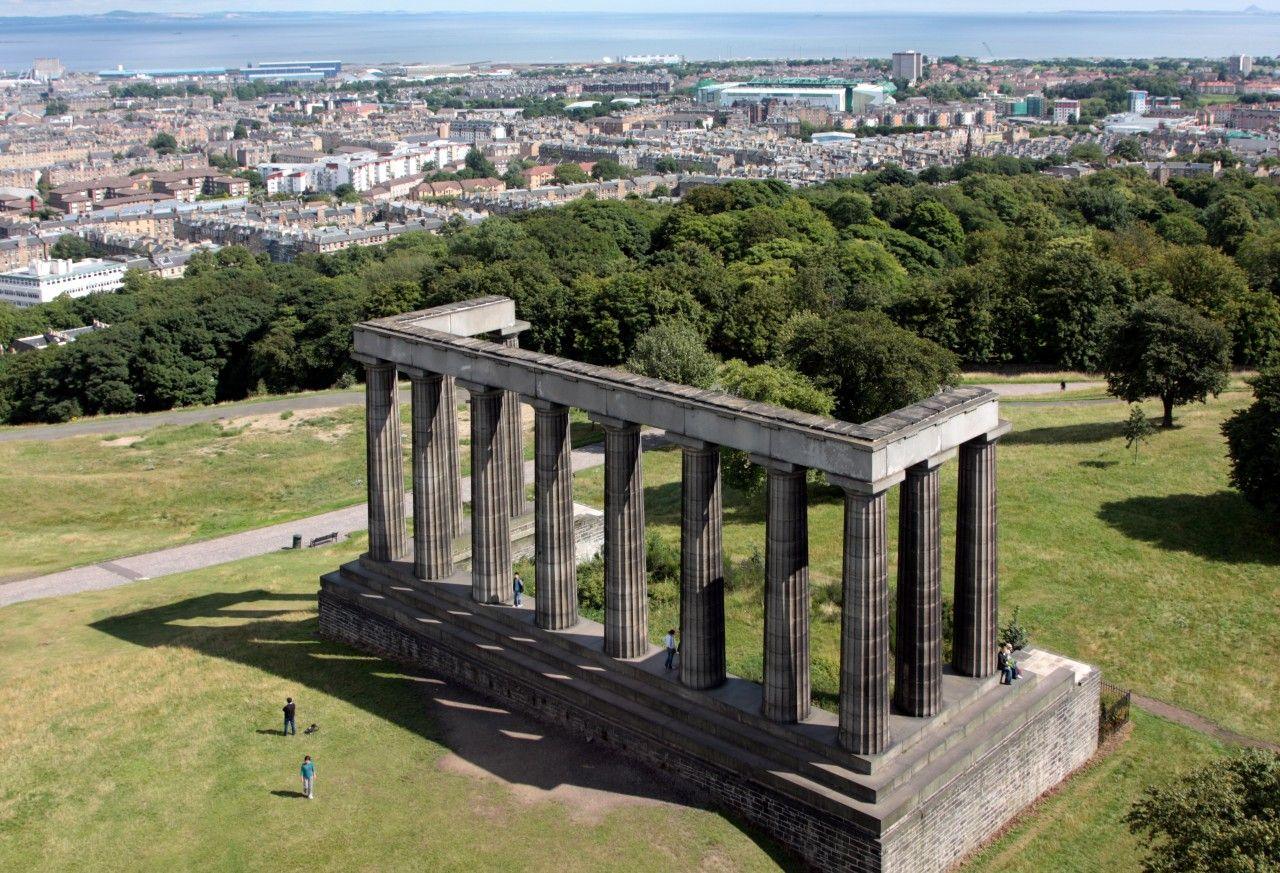
Calton Hill, seen here in 2010, is normally much greener and lush
He said: "It is a combination of over-cutting the grass, the dryness and then very large numbers of visitors.
"The areas where the grass has not been cut short there is no erosion.
"We are unhappy at them cutting it too low and too frequently."
He added that they now had "big patches of bare earth" on the hill.
He said they had lost about 2,000 sq m (21,500 sq ft) of turf on the 10.5 hectares (26 acres) hill.
Calton Hill is part of the UNESCO World Heritage Site and is home to the National Monument, designed as a replica of the Parthenon in Athens.
It was intended to commemorate the Scottish servicemen who died in the Napoleonic Wars, but was never completed, leaving the 12 columns currently on the site.
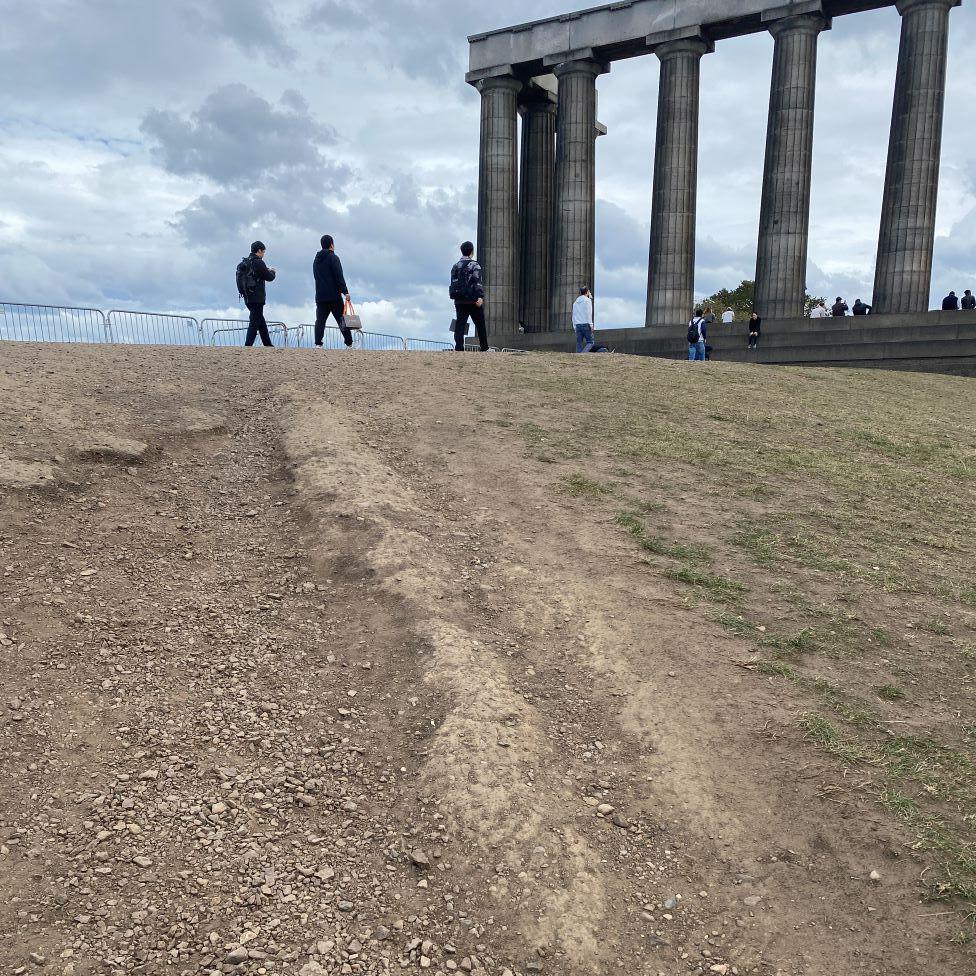
Edinburgh Council confirmed it had now adjusted grass cutting schedules across the volcanic hill to lessen further impact
A report by the trust, external reads: "The deterioration in the general condition of the ground has been severe.
"Erosion is the biggest problem we face. Sometimes you can actually see the earth blowing away in the wind."
Margaret Graham, City of Edinburgh Council's culture and communities convener, said: "We're aware of the erosion on Calton Hill and are making plans to re-turf, re-seed and improve the formal path network to control footfall.
"We're also looking to rest areas periodically to reduce any further erosion."
The council also confirmed it had adjusted grass cutting schedules across the site to lessen further impact.
- Published14 January
